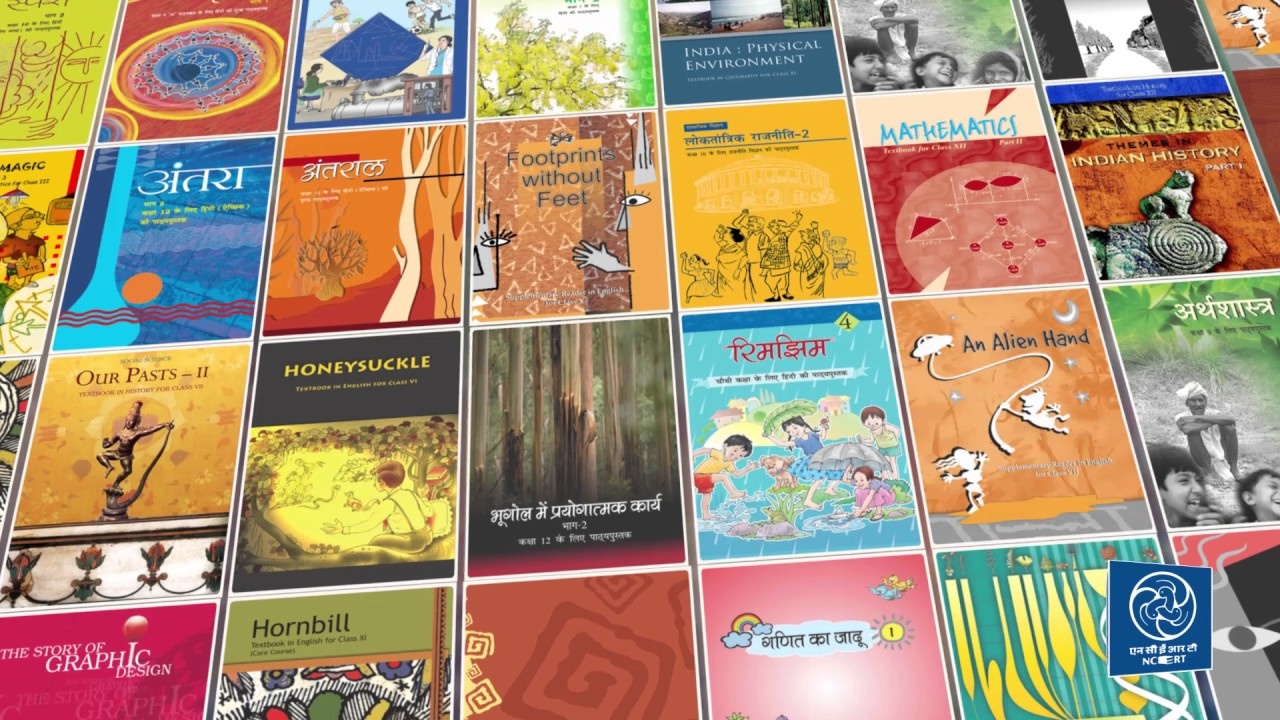NCERT to Launch Digital Textbooks
Posted On July 11, 2025

NCERT to Launch Digital Textbooks- Revolutionizing Learning in India
In a transformative leap towards modernizing the education system, the National Council of Educational Research and Training (NCERT) is poised to significantly expand its digital textbook offerings, making a vast array of learning resources accessible online and offline. This initiative, deeply rooted in the vision of the National Education Policy (NEP) 2020, aims to bridge the digital divide, enhance learning experiences through interactive content, and alleviate the burden of heavy school bags. While digital versions of NCERT textbooks have been available on platforms like ePathshala for some time, the intensified push for competency-based digital textbooks, particularly for classes whose curricula were revised for the 2025-26 academic session (including Classes 4, 5, 7, and 8), marks a pivotal moment in India's educational evolution.
The core motivation behind this shift is the National Education Policy 2020, which strongly advocates for leveraging technology to ensure equitable access to high-quality education. The NEP envisions an education system that is flexible, engaging, and relevant to 21st-century skills. Digital textbooks are central to this vision, offering a dynamic alternative to traditional print materials. They promise to make learning more interactive, personalized, and accessible, catering to diverse learning styles and needs across the vast geographical expanse of India. This move is not merely about digitizing existing books but about creating rich, multimedia-enhanced learning experiences.
The new digital textbooks are expected to go beyond simple PDF versions. They will incorporate a range of interactive features designed to enhance student engagement and comprehension. These features are likely to include- embedded multimedia content such as videos, animations, and simulations to explain complex concepts; interactive quizzes and self-assessment tools for immediate feedback; hyperlinks to additional resources, external websites, and supplementary materials; and annotation tools that allow students to highlight text, make notes, and bookmark pages directly within the digital book. Furthermore, accessibility features like text-to-speech functionality and customizable font sizes and background colors will make the content more inclusive for students with varying abilities.
The benefits of widespread adoption of digital textbooks are manifold. For students, the most immediate relief comes from the reduced burden of heavy school bags. Digital textbooks are also often more cost-effective in the long run, eliminating printing and distribution costs, and allowing for easy, real-time updates without the need for new physical editions. The interactivity they offer can make learning more engaging and help students better understand abstract or difficult concepts through visual and auditory aids. Moreover, the accessibility on multiple devices (smartphones, tablets, laptops) means learning can happen anytime, anywhere, reducing geographical barriers and enabling continuous learning, even in remote areas with limited access to physical books.
For teachers, digital textbooks offer a powerful pedagogical tool. They provide access to a wealth of supplementary resources, facilitating more dynamic and engaging classroom instruction. Teachers can use interactive elements to conduct quizzes, demonstrate concepts through simulations, and even track student progress and engagement through embedded analytics, allowing for personalized teaching interventions. The ease of updating content means that teachers will always have access to the most current information and pedagogical approaches, aligning their teaching with the latest curriculum changes and educational research.
However, the ambitious launch of digital textbooks also comes with significant challenges, particularly in a country as diverse as India. The most prominent hurdle is the digital divide. Despite increasing smartphone penetration, many students, especially in rural and economically disadvantaged areas, still lack consistent access to digital devices and reliable internet connectivity. This disparity could exacerbate existing educational inequalities if not adequately addressed. Furthermore, ensuring that all teachers possess the necessary digital literacy and pedagogical skills to effectively integrate digital textbooks into their teaching practices is crucial and requires extensive ongoing professional development and training programs. The initial delays in the release of new competency-based textbooks for certain classes in early 2025 also underscore the logistical complexities of such a large-scale transition.
Despite these hurdles, the NCERT's commitment to launching and promoting digital textbooks is a testament to India's dedication to embracing educational technology. Initiatives like the existing ePathshala platform, which already hosts a wide array of e-resources, will be critical to the success of this expanded digital push. Continued investment in digital infrastructure, robust teacher training, and innovative solutions to bridge the access gap will be essential. By making high-quality, interactive digital textbooks a cornerstone of the curriculum, NCERT aims to empower a generation of learners, making education more equitable, effective, and future-ready, ultimately contributing to a digitally literate and informed citizenry.
In a transformative leap towards modernizing the education system, the National Council of Educational Research and Training (NCERT) is poised to significantly expand its digital textbook offerings, making a vast array of learning resources accessible online and offline. This initiative, deeply rooted in the vision of the National Education Policy (NEP) 2020, aims to bridge the digital divide, enhance learning experiences through interactive content, and alleviate the burden of heavy school bags. While digital versions of NCERT textbooks have been available on platforms like ePathshala for some time, the intensified push for competency-based digital textbooks, particularly for classes whose curricula were revised for the 2025-26 academic session (including Classes 4, 5, 7, and 8), marks a pivotal moment in India's educational evolution.
The core motivation behind this shift is the National Education Policy 2020, which strongly advocates for leveraging technology to ensure equitable access to high-quality education. The NEP envisions an education system that is flexible, engaging, and relevant to 21st-century skills. Digital textbooks are central to this vision, offering a dynamic alternative to traditional print materials. They promise to make learning more interactive, personalized, and accessible, catering to diverse learning styles and needs across the vast geographical expanse of India. This move is not merely about digitizing existing books but about creating rich, multimedia-enhanced learning experiences.
The new digital textbooks are expected to go beyond simple PDF versions. They will incorporate a range of interactive features designed to enhance student engagement and comprehension. These features are likely to include- embedded multimedia content such as videos, animations, and simulations to explain complex concepts; interactive quizzes and self-assessment tools for immediate feedback; hyperlinks to additional resources, external websites, and supplementary materials; and annotation tools that allow students to highlight text, make notes, and bookmark pages directly within the digital book. Furthermore, accessibility features like text-to-speech functionality and customizable font sizes and background colors will make the content more inclusive for students with varying abilities.
The benefits of widespread adoption of digital textbooks are manifold. For students, the most immediate relief comes from the reduced burden of heavy school bags. Digital textbooks are also often more cost-effective in the long run, eliminating printing and distribution costs, and allowing for easy, real-time updates without the need for new physical editions. The interactivity they offer can make learning more engaging and help students better understand abstract or difficult concepts through visual and auditory aids. Moreover, the accessibility on multiple devices (smartphones, tablets, laptops) means learning can happen anytime, anywhere, reducing geographical barriers and enabling continuous learning, even in remote areas with limited access to physical books.
For teachers, digital textbooks offer a powerful pedagogical tool. They provide access to a wealth of supplementary resources, facilitating more dynamic and engaging classroom instruction. Teachers can use interactive elements to conduct quizzes, demonstrate concepts through simulations, and even track student progress and engagement through embedded analytics, allowing for personalized teaching interventions. The ease of updating content means that teachers will always have access to the most current information and pedagogical approaches, aligning their teaching with the latest curriculum changes and educational research.
However, the ambitious launch of digital textbooks also comes with significant challenges, particularly in a country as diverse as India. The most prominent hurdle is the digital divide. Despite increasing smartphone penetration, many students, especially in rural and economically disadvantaged areas, still lack consistent access to digital devices and reliable internet connectivity. This disparity could exacerbate existing educational inequalities if not adequately addressed. Furthermore, ensuring that all teachers possess the necessary digital literacy and pedagogical skills to effectively integrate digital textbooks into their teaching practices is crucial and requires extensive ongoing professional development and training programs. The initial delays in the release of new competency-based textbooks for certain classes in early 2025 also underscore the logistical complexities of such a large-scale transition.
Despite these hurdles, the NCERT's commitment to launching and promoting digital textbooks is a testament to India's dedication to embracing educational technology. Initiatives like the existing ePathshala platform, which already hosts a wide array of e-resources, will be critical to the success of this expanded digital push. Continued investment in digital infrastructure, robust teacher training, and innovative solutions to bridge the access gap will be essential. By making high-quality, interactive digital textbooks a cornerstone of the curriculum, NCERT aims to empower a generation of learners, making education more equitable, effective, and future-ready, ultimately contributing to a digitally literate and informed citizenry.











